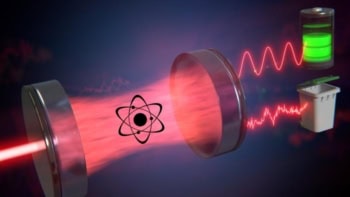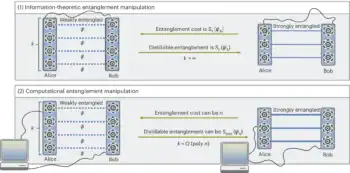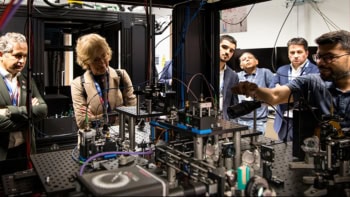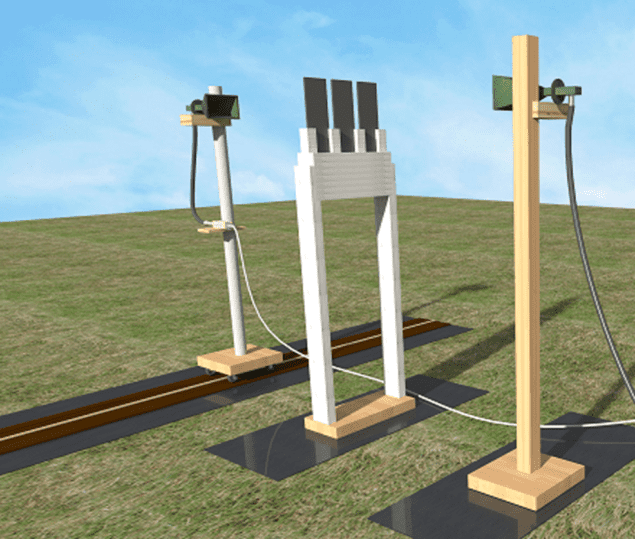
The importance of including exotic “non-classical paths” in analyses of quantum interference has been demonstrated experimentally by physicists in India. Urbasi Sinha and her colleagues at the Raman Research Institute in Bangalore measured the interference pattern produced by microwaves as they navigated through three parallel barriers. Their results show that the pattern cannot be calculated by simply assuming that the microwave photons travel via “classical paths” through the barriers. Instead, all possible routes through the barriers – including weaving through multiple gaps – must be accounted for.
One of the cornerstones of quantum theory is the fact that particles can also behave as waves. This can be demonstrated by the double-slit experiment, which involves firing a stream of particles such as electrons through two adjacent slits and observing the build-up of a wave-like interference pattern on a screen on the other side of the slits. However, each particle is detected as a tiny dot within the pattern, suggesting that the particles are discrete entities too.
This double-slit pattern can be calculated by treating the system as a superposition of waves that travel through one slit and waves that travel through the other slit. However, in 1986 the Japanese physicist Haruichi Yabuki showed that this is an approximation because it ignores the tiny possibility that a particle could take a non-classical path through the slits. An example of such a path is when a particle goes through one slit and then loops back through the other slit and then back through the first towards the detector.
Tiny effect
In 2014, a team led by Sinha used the path-integral formulation of quantum mechanics to calculate the effect of non-classical paths on the interference pattern from three slits. The calculations revealed that the deviation from a simple superposition depends on the size of the de Broglie wavelength of the particle. The effect is tiny for electrons and visible light – being one part in 108 and one part in 105 respectively – which is too small to detect.
However, they did show in 2014 that the deviation is much larger for microwave photons and now Sinha and colleagues have done an experiment that has measured this deviation for the first time.
Instead of using three slits, the team did a “triple slot” experiment whereby the interference pattern is created when quantum particles encounter three barriers (slots) to their propagation. Slots rather than slits were used for practical reasons related to the size and cost of the experiment.
Moving detector
The team used a pyramidal horn antenna to generate a beam of microwave photons with a wavelength of 5 cm. The beam was directed at three microwave-absorbing barriers (slots) – each 10 cm wide and separated by 3 cm. A microwave detector was located behind the slots, where it can be moved very precisely to acquire the resulting interference pattern. The slots were located halfway between source and detector – which were 2.5 m apart.
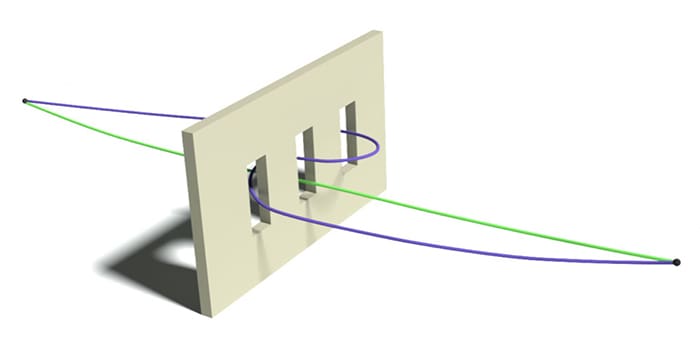
Photons weave their way through a triple slit
The team measured a deviation of 6% from the superposition principle thereby confirming the significance of non-classical paths. They also point out that their observation has implications for radio astronomy, where arrays of detectors are used to create large radio telescopes using the principle of superposition. Describing their results in the New Journal of Physics, the team points out that such deviations could affect observations made using arrays, particularly in precision astronomy experiments.

